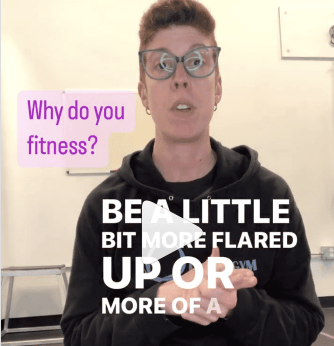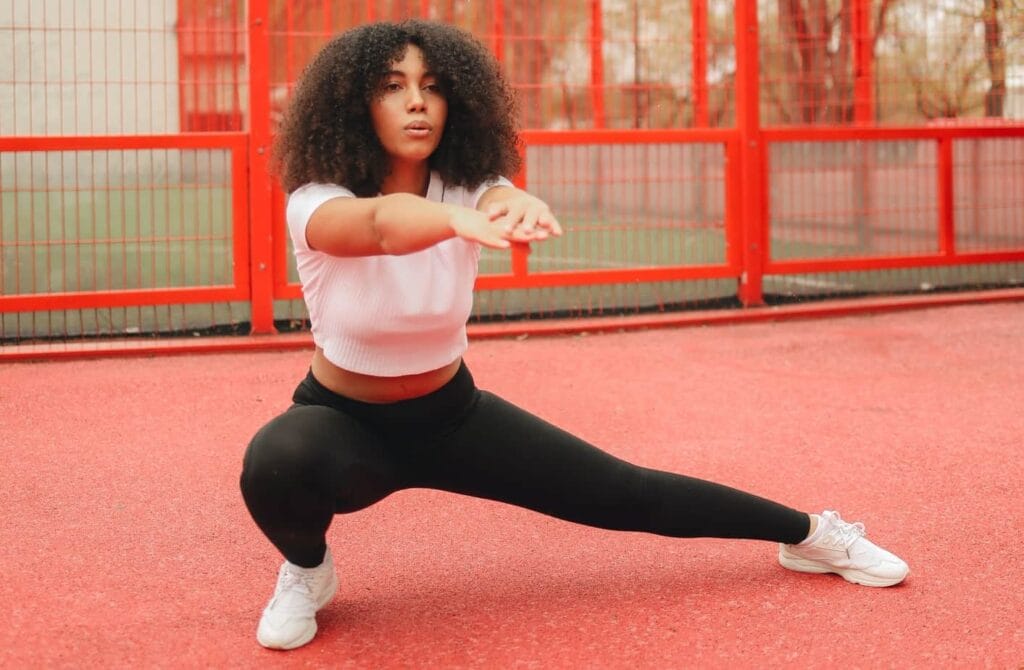Honoring your body while continuing to move
I have been injured more than a few times: years of ankle sprains eventually requiring surgery, broken toes, a torn patella tendon, a cooking accident that ended with six stitches in my hand, a labral tear in my left hip and, most recently, a shoulder subluxation simply from sleeping (thanks, hyper-mobility)!
That’s a lot. You might wonder: when haven’t I been injured?
The answer: a lot of the time. But when I am injured, if possible I keep moving, sometimes smaller and slower, but other times in much the same way as before the injury.
I’ve learned a thing or two navigating these various injuries — namely that injury doesn’t have to mean the end of movement. In fact, it shouldn’t. Let’s dig in.
Find your Why
So, you’ve had an injury. You’ve seen a medical professional (if needed), gotten all patched up, received some some guidance, you’ve rested and iced.
Now what?
At this point it can be helpful to think about what you can do, but also about your why. Why do you want to partake in fitness in the first place?
I invite you to get quiet and reflect for a moment: What is your why? Don’t settle for the first answer that comes to mind (i.e. to be healthy). If being healthy is your first-level why, ask: what does healthy look like for you? Why is it important? Dig deeper.
I made an Instagram post about my why and asked viewers to share their whys. Maybe it will help you get your mind thinking about your why.
My whys include caring for my mental health and keeping my previous injuries from always feeling ouchie or achy.

Once you have your why(s), this will help you honor any rest you need for your recovery, while also finding movement that makes sense to your why.
Find the Right Movements
When injury was sufficient enough for the need to see a doctor and/or a physical therapist, I incorporated the exercises they gave me into a little “workout time”. I continued to foam roll, breathe and do any other warm-up exercises I could. Then, I searched for movements that brought me joy and didn’t cause pain.
If you’re going through this, I recommend starting small, testing the waters, and when/if you feel any pain, back off or choose something different.
Here are some things I have done — see if any of these could be options for you if you find yourself nursing an injury in the future.
Movements during lower body injury
When I have had a lower body injury I focused on upper body movements and core.
- Planks from my knees (if I can be on my knees)
- Push ups from my knees (if I can be on my knees)
- Exercise band and weighted exercise:
- Seated rows
- Chest press from lying on the floor
- Seated reverse flys
- Delt raises
- Any other upper body muscles group isolation exercises.
- Cycling slowly with little resistance on a stationary or recumbent bike
- Swimming
- Following along with Pilates workouts or gentle yoga videos
- I recently learned about this YouTube channel Sit and Be Fit, which has a lot of great stuff.
Movements during upper body injury
When I have an injury to my upper body, I focus my workouts on my lower body. Questions that help focus my efforts include: Can I still hold some weights? If I can, do they need to be lighter? If I can’t, can I use a weight vest to still challenge my lower body? If not, how can I use body weight and single leg work most effectively? I often come back to Pilates because it can be done while lying down and has a strong core and hip strengthening component. I’ve also enjoyed some gentle yoga while injured in my upper body. Here are some other movements to consider:
- Squats (with or without a weight)
- Split squats
- Lunges
- Lateral squats
- Single-leg deadlifts
- Hip lifts and single-leg hip lifts
- Plank and side plank (depending on upper body injury)
- other core, leg and hip exercises
- Walking or a jogging (let’s be real-I don’t jog/run, but maybe you do!)
- Stationary bike
- Hula hoop to some fun music
- Slide board
- Throw myself a dance party in my living room!
Depending on your injury, you may also consider training your non-injured side. This has actually shown to help maintain some of the strength in the injured side (learn more here & here), but you (and possibly your PT or doctors) will know if this is appropriate for you.
Discover What Moves You
Pun intended!
There are so many possibilities, but you may need to do some serious finagling of the details, depending on what’s available to you and how immobilized you are. Can you find some movement videos that light you up? Do you have access to weights or gym equipment? What props do you need to keep you safe?
Discovering what can work for you will take time for searching, planning, and considering. But give yourself that. Keep your why(s) in mind as you come up with your movement game plan.
I also want to name that I am a personal trainer and so my exercise library may be a bit more extensive than yours, but I know that you can find and even know what movements you enjoy. You may be wiser than you think.
However if you need the assistance of a trainer, reach out, we can help! We have supported many Reimagym members to recover from a wide range of injuries.
Yours in movement-Theresa
Try our 14-day trial for $364 $59 — this includes a one-on-one strategy session, a private training with one of our coaches, three small group training sessions, and two group fitness classes. Come see what all the fuss is about!

